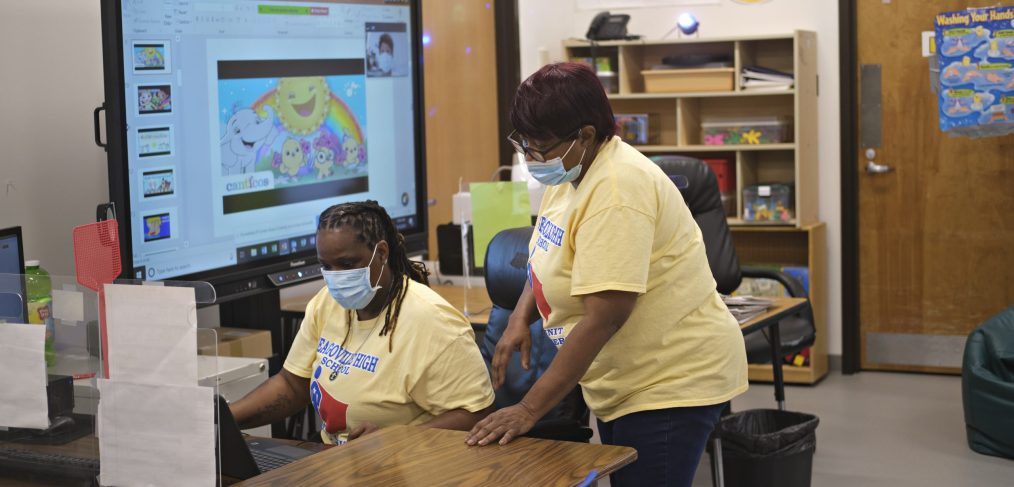National STEM/STEAM Day is celebrated every Nov. 8 to highlight the fields of science, technology, engineering, art and mathematics, and to encourage people to pursue them. At the heart of these efforts are the district’s STEM and STEAM teachers, including Jesus Monsivais Flores, a sixth-grade math teacher at L.V. Stockard Middle School.
Monsivais Flores is a proud graduate of Dallas ISD. Growing up, he said he was often told that he would drop out of school, but his teachers encouraged him to pursue his dream of graduating early and attending The University of Texas at Dallas. Now, his passion for math and his determination to transform student lives are serving him well as he pursues his second year in the classroom.
“I always wanted to give back to where I came from,” Monsivais Flores said. “My teachers never gave up on me, and I want to be that support system for my students. I want them to know that they have it in their possession to do great things.”
While math can be challenging, Monsivais Flores believes it is a universal language that anyone can learn. Last year, one of his students was struggling because he was learning English, so Monsivais Flores stepped up to build a stronger connection with him.
“At first, he was confused by what we were doing and was scared and nervous, but then I shared my story with him,” Monsivais Flores said. “I am under the program of Dreamers [Deferred Action for Childhood Arrivals], so I am here with a work permit teaching in Dallas ISD. When I shared my story with that student, he started feeling more comfortable and began asking for help when he didn’t understand something.”
Monsivais Flores taught the student key words and encouraged him in tutoring sessions, and the student went from scoring low on his Assessment of Course Performance in the fall to acing tests in the spring and earning “meets grade level” on his State of Texas Assessments of Academic Readiness test.
“I was so excited for him that I called his mom and told them as soon as I found out his score,” Monsivais Flores said. “His story always motivates me not only to teach my students math, but also to show them that I’m here for them. I’m not just their teacher—I’m also their backbone, their support system.”
STEM and STEAM lessons prepare students for real-world success, something Monsivais Flores has experienced firsthand. One of his favorite units focuses on financial literacy, and he said he loves helping his students compare different career salaries or understand how scholarships can put them through college.
Ultimately, Monsivais Flores’ goal is to transform student lives by delivering excellent content and forming personal connections with them so he can encourage them on their journeys, and his efforts appear to be paying off. One of his students moved to a new school, and he recently reached out to Monsivais Flores with a simple message.
“His exact words were, ‘Thank you so much,’” Monsivais Flores said. “And I asked, ‘For what?’ And he said, ‘For never giving up on me and for always helping me.’ That is what teaching means to me. Even if my students are at a different school, they can always count on me for anything.”
STEAM innovation across the district
These real-world lessons will benefit even more students at six Dallas ISD schools as they enjoy classroom upgrades focused on providing a high-quality STEAM education, thanks to the TEXAS YES Project. Representatives from the awarded schools recently received over $50,000 in educational grants, which will allow those campuses to get equipment to bolster their STEAM programs or help update classrooms and facilities.
The six campuses are N.W. Harllee Early Childhood Center, Clara Oliver Elementary School, Leslie A. Stemmons Elementary School, Stephen C. Foster Elementary School, Seagoville High School and the STEM Environmental Education Center.
“These grants will open opportunities for students of all ages to really apply what they’re learning in their science and math classrooms and turn that into something real,” said Michael Ruiz, executive director of STEM in Dallas ISD.










